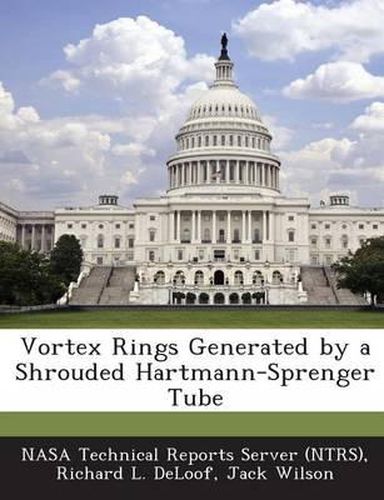Readings Newsletter
Become a Readings Member to make your shopping experience even easier.
Sign in or sign up for free!
You’re not far away from qualifying for FREE standard shipping within Australia
You’ve qualified for FREE standard shipping within Australia
The cart is loading…






The pulsed flow emitted from a shrouded Hartmann-Sprenger tube was sampled with high-frequency pressure transducers and with laser particle imaging velocimetry, and found to consist of a train of vortices. Thrust and mass flow were also monitored using a thrust plate and orifice, respectively. The tube and shroud lengths were altered to give four different operating frequencies. From the data, the radius, velocity, and circulation of the vortex rings was obtained. Each frequency corresponded to a different length to diameter ratio of the pulse of air leaving the driver shroud. Two of the frequencies had length to diameter ratios below the formation number, and two above. The formation number is the value of length to diameter ratio below which the pulse converts to a vortex ring only, and above which the pulse becomes a vortex ring plus a trailing jet. A modified version of the slug model of vortex ring formation was used to compare the observations with calculated values. Because the flow exit area is an annulus, vorticity is shed at both the inner and outer edge of the jet. This results in a reduced circulation compared with the value calculated from slug theory accounting only for the outer edge. If the value of circulation obtained from laser particle imaging velocimetry is used in the slug model calculation of vortex ring velocity, the agreement is quite good. The vortex ring radius, which does not depend on the circulation, agrees well with predictions from the slug model.
$9.00 standard shipping within Australia
FREE standard shipping within Australia for orders over $100.00
Express & International shipping calculated at checkout
The pulsed flow emitted from a shrouded Hartmann-Sprenger tube was sampled with high-frequency pressure transducers and with laser particle imaging velocimetry, and found to consist of a train of vortices. Thrust and mass flow were also monitored using a thrust plate and orifice, respectively. The tube and shroud lengths were altered to give four different operating frequencies. From the data, the radius, velocity, and circulation of the vortex rings was obtained. Each frequency corresponded to a different length to diameter ratio of the pulse of air leaving the driver shroud. Two of the frequencies had length to diameter ratios below the formation number, and two above. The formation number is the value of length to diameter ratio below which the pulse converts to a vortex ring only, and above which the pulse becomes a vortex ring plus a trailing jet. A modified version of the slug model of vortex ring formation was used to compare the observations with calculated values. Because the flow exit area is an annulus, vorticity is shed at both the inner and outer edge of the jet. This results in a reduced circulation compared with the value calculated from slug theory accounting only for the outer edge. If the value of circulation obtained from laser particle imaging velocimetry is used in the slug model calculation of vortex ring velocity, the agreement is quite good. The vortex ring radius, which does not depend on the circulation, agrees well with predictions from the slug model.